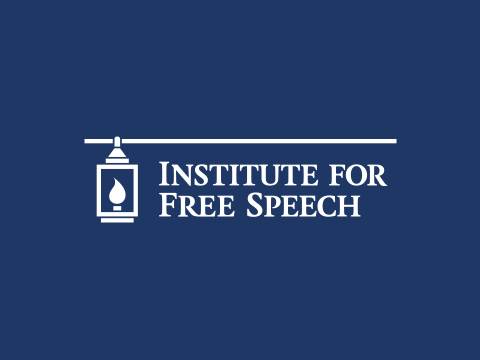Common Cause has a new President, former Congressman Bob Edgar (D-Pa). The hiring is an interesting one for what it can tell us about the "reform" movement.
Edgar is third consecutive president of Common Cause to come from the ranks of former Democratic Party officeholders, following Scott Harshbarger and Chellie Pingree, all three selected in the past decade. According to CQ Weekly, Edgar’s takes up the post at a time of financial difficulties for Common Cause, causing the organization to "scale back its operations in Washington." During the reign of Edgar’s predecessor, Ms. Pingree (who is leaving to return to partisan Democratic politics), Common Cause notably changed its emphasis, ceding leadership on campaign finance and "ethics" issues (though remaining heavily involved in them) to a new generation of outfits such as the Campaign Legal Center and the Brennan Center, and devoting more coverage to substantive political issues. Asked by CQ if Common Cause had "lost track of its mission," Edgar responded, "I want our members to be reminded as to why we want those reforms: to end the poverty that kills, to heal the planet, and having justice for all people." All worthwhile goals, of course, with the devil in the details. And in those details there is some revealing information.
Common Cause was founded by the liberal Republican John Gardner, who served as Secretary of Health, Education, and Welfare under Democratic President Lyndon Johnson. After leaving the Johnson administration, Gardner led the National Urban Coalition for two years, and then in 1970 formed Common Cause as a "citizens movement" for America’s "renewal." The idea behind Common Cause, outlined in Gardner’s books, The Recovery of Confidence and In Common Cause, was to have an organization with broad citizen participation, not one of a self-perpetuating board with little or no member participation.
Gardner seemed to have assumed that the public interest was readily discernable and that the trick was to make government, captured by special interests, responsive to it. So Common Cause would conduct referenda among its membership, which quickly grew to in excess of 200,000, to determine the organization’s positions. But Gardner soon found the idea of a "public interest" determined by the citizenry at large to be a "tricky concept." It turned out that people often disagreed on what the public interest really was, or at least on how best to accomplish it.
One possibility might be that the best way to discern the public interest would be representative government – appointing or electing good people to office who would view their jobs in a rather Burkean sense of acting on behalf of the "public good." But for Gardner, this was discouraging, because it still didn’t lead to the right substantive results. The government kept failing at vital tasks of substantive "reform" – at least we could say that they were not enacting the types of reforms that Gardner wanted to see, so clearly the reforms must not have been in the "public interest." But if the people could not reach broad consensus on the "public good" through referenda, and the government could not reach it through legislative means, how could it be acheived?
The solution came in increased emphasis – indeed, for many years nearly a sole emphasis – on "process" reforms, most notably campaign finance reform. Here the idea was that if process could be purified, then finally the elected representatives would get things right. But this grew frustrating as well. First, the desired process reforms were often hard to get enacted. This could be blamed on the venal interests frustrating the process, of course, rather than accepting that what Common Cause might view as "reform" others might view as violations of speech rights or efforts to rig legislative outcomes. Nevertheless, reform was hard to enact. Further, even when enacted – as with the Federal Election Campaign Act amendments of 1974 – it was not terribly successful in leading to the desired substantive reforms, or even in making the process appear obviously "better" in any objective fashion. This too could be blamed on the special interests that frustrated enforcement and found "loopholes" around the law, but as a fact it remained.
By the late 1990s, Common Cause seems to have decided that its laser-like focus on process reform needed to expand. In July, 1999, Harshbarger, coming off a failed campaign for Governor of Massachusetts, was hired as President and given the task of "expanding Common Cause’s view." Harshbarger told the Boston Globe, "I have been specifically asked to broaden the agenda of Common Cause," and Common Cause Chairman Derek Bok added, ""Campaign finance reform is going to remain a very important part of the agenda, but I think it perhaps became too dominant, and maybe we didn’t make it clear enough that campaign finance reform is a means to an end." The Globe noted that Common Cause’s, "influence and relevance have waned in recent years." Nevertheless, by the time Pingree, coming off a failed campaign for U.S. Senate, took over in 2003, the Washington Post reported that the organization faced, "stagnant membership and declining revenue." Pingree moved the group still more sharply into the fold of Democratic party politics. With McCain-Feingold having been passed in 2002, campaign finance continued to fall back among the organization’s priorities. Now, Edgar, another former Democratic politician, takes over, talking about the need for the organization to live on smaller budgets.
We might sum up the history in this fashion: Gardner thought that "the people" shared a common vision about what needed to be done, only to quickly realize that even if there was agreement on the issues of importance, there was little agreement among the people on the solutions. This led to increased focus on process reforms. But ultimately, process reforms also failed to realize the "common cause" it should have. This was routinely blamed on special interests frustrating the reforms from being enacted or being enforced, but deep down even the strongest believers must have suspected that perhaps there was not such a "common cause" after all. Maybe elections mattered. Maybe there were clear policy choices, different ways to do different things. Eventually, the group began to stagnate. The solution has been to embrace a more openly liberal and, in particular, more openly partisan substantive agenda. The liberal Republicanism of Gardner having long been on the decline, and with Gardner’s ghost an increasingly distant memory, perhaps Common Cause now sees itself more free to abandon the notion of a truly "common" agenda and what increasingly appeared to be a thin veneer of non-partisanship and simply ally itself as an interest group within the Democratic Party: hence the procession of party pols taking the reigns. Bob Edgar may indeed want, "to end the poverty that kills, to heal the planet, and having justice for all people," but we doubt that he will embrace tax cuts and and the 1996 welfare bill as the means to end poverty, deregulation and economic growth as the most promising way to develop the technology and means to heal the planet, or Clarence Thomas’s idea of "justice for all people." The final nails have been hammered in the coffin of Gardner’s vision.
For their part, the new groups that have taken over the cause of campaign finance restrictions, such as the Campaign Legal Center and the Brennan Center, and also think tanks such as the Center for Responsive Politics, make no pretense of being mass organizations, preferring to rely on large foundation grants and corporate contributions. They will continue to claim to speak for the masses, but the masses have not rallied to the cause.
Meanwhile, campaign finance "reform" has become more openly about seeking political advantage over one’s political opponents, most obviously in the 2004 battle over regulation of "527" organizations, when most Democrats suddenly switched their position to support less regulation, while most Republicans suddenly switched their position to support more regulation, all on the rather obvious calculation that 527s were a "loophole" that seemed more likely to benefit Democrats that fall. The failure of Common Cause notwithstanding, process is not without substantive consequences. The framers wisely sought to avoid the use of process to rig substantive outcomes, by giving us the First Amendment. Their effort – admittedly itself a process solution to a perceived problem – now hangs in the balance. That’s what CCP fights for.












